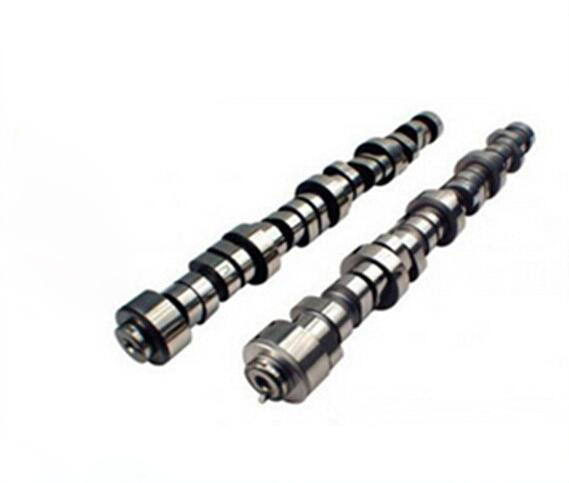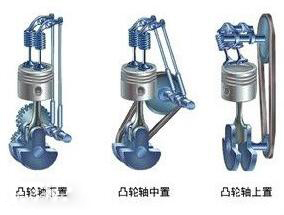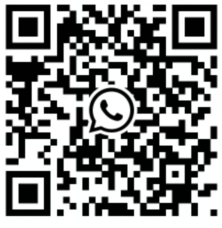Camshaft Introduction

The camshaft is a component of a piston engine. Its function is to control the opening and closing of the valve. Although the speed of the camshaft in a four-stroke engine is half that of the crankshaft (in a two-stroke engine, the speed of the camshaft is the same as that of the crankshaft), its speed is usually still very high, and it needs to bear a lot of torque. Therefore, the design has high requirements for the strength and support of the camshaft, which is generally made of high-quality alloy steel or alloy steel. Because the law of valve movement is related to the power and working characteristics of the engine, camshaft design plays a very important role in the design process of the engine.
Camshaft working conditions and materials
The camshaft bears periodic impact load. The contact stress between the cam and the tappet is very large, and the relative sliding speed is also very high, so the cam working surface is seriously worn. In view of this situation, the camshaft journal and cam working surface should have high dimensional accuracy, small surface roughness and sufficient rigidity, as well as high wear resistance and good lubrication.
Camshaft is usually forged from high-quality carbon steel or alloy steel, and can also be cast from alloy cast iron or nodular cast iron. The working surfaces of journal and cam are polished after heat treatment.
Structure

The main body of the camshaft is a cylindrical rod whose length is approximately the same as that of the cylinder bank. Several cams are sleeved on it to drive the valve. The camshaft is supported in the camshaft bearing hole through the camshaft journal, so the number of camshaft shaft diameter is an important factor affecting the camshaft support stiffness. If the camshaft stiffness is insufficient, bending deformation will occur during operation, thus affecting the valve timing.
The side of the cam is egg-shaped. It is designed to ensure sufficient intake and exhaust of the cylinder. In addition, in consideration of the durability and smoothness of the engine, the valve should not have excessive impact due to the acceleration and deceleration process during the opening and closing actions, otherwise it will cause serious wear of the valve, increased noise or other serious consequences. Therefore, the cam is directly related to the power, torque output and running stability of the engine.
Camshaft position
There are three types of camshaft positions: lower, middle and upper. The camshaft of the lower valve train is located in the crankcase, the camshaft of the middle valve train is located in the upper part of the engine body, and the camshaft of the upper valve train is located on the cylinder head.
At present, the engines of most mass production vehicles are equipped with overhead camshafts. The main advantages of overhead camshaft structure are less moving parts, short transmission chain, and large stiffness of the whole mechanism, which makes the camshaft closer to the valve, reducing the waste of round trip kinetic energy caused by the large distance between the camshaft and the valve. The engine with overhead camshaft has higher speed and better operation stability due to its fast valve opening and closing action.
Transmission
Common transmission modes between camshaft and crankshaft include gear transmission, chain transmission and toothed belt transmission. The transmission between the lower camshaft and the central camshaft and the crankshaft is mainly driven by the cylindrical timing gear. Generally, only one pair of gears is required from the crankshaft to the camshaft. If the diameter of the transmission gear is too large, another intermediate idler gear can be added. In order to smooth mesh and reduce working noise, most timing gears are helical gears.
Chain drive is common between overhead camshaft and crankshaft, but its reliability and durability are not as good as gear drive. Toothed belt is widely used to replace the drive chain on high-speed engines, but chain drive is still used on some high-power engines. The toothed belt has the characteristics of low noise, reliable operation and low cost. For DOHC, the exhaust camshaft is usually driven by the crankshaft through the timing belt or chain, the inlet camshaft is driven by the exhaust camshaft through the metal chain, or both the inlet camshaft and exhaust camshaft are driven by the crankshaft through the belt or chain.
Fault
Common faults of camshaft include abnormal wear, abnormal noise and fracture. Abnormal wear usually occurs before abnormal noise and fracture.
(1)The camshaft is almost at the end of the engine lubrication system, so the lubrication condition is not optimistic. If the oil supply pressure of the oil pump is insufficient, or the lubricating oil passage is blocked, the lubricating oil cannot reach the camshaft, or the tightening torque of the fastening bolts of the bearing cover is too large, and the lubricating oil cannot enter the camshaft clearance, the camshaft will wear abnormally.
(2)The abnormal wear of the camshaft will cause the gap between the camshaft and the bearing seat to increase, and the axial displacement will occur when the camshaft moves, resulting in abnormal noise. Abnormal wear will also cause the gap between the drive cam and the hydraulic tappet to increase, and the cam will collide with the hydraulic tappet during assembly, resulting in abnormal noise.
(3)The camshaft sometimes breaks and other serious faults. The common causes are hydraulic tappet fracture or serious wear, serious poor lubrication, poor camshaft quality and camshaft timing gear fracture.
(4)In some cases, camshaft failure is caused by human factors, especially when the camshaft is not removed correctly during engine maintenance. For example, when removing the camshaft bearing cover, use a hammer to knock hard or use a screwdriver to pry it off, or install the bearing cover in the wrong position, resulting in the mismatch between the bearing cover and the bearing seat, or the tightening torque of the bearing cover fastening bolts is too large. When installing the bearing cover, pay attention to the direction arrow and position number on the bearing cover surface, and tighten the fastening bolts of the bearing cover with a torque wrench in strict accordance with the specified torque.





















